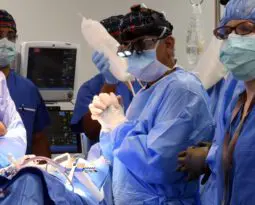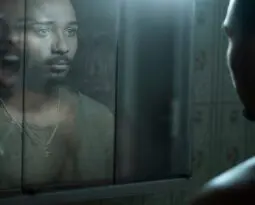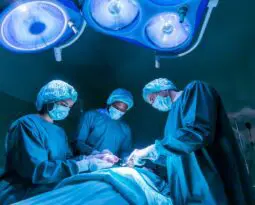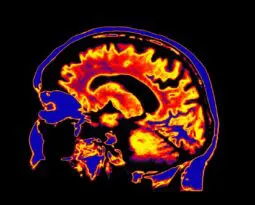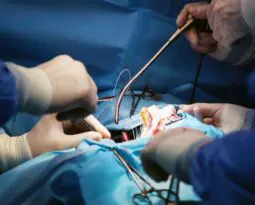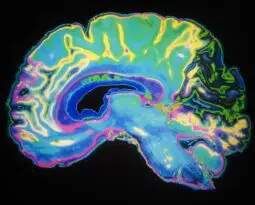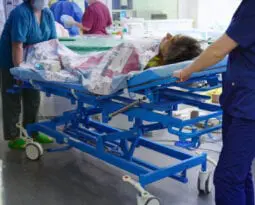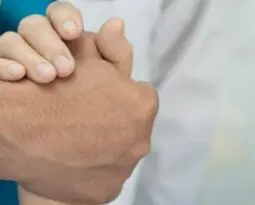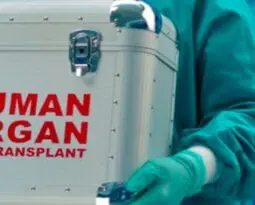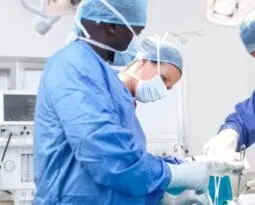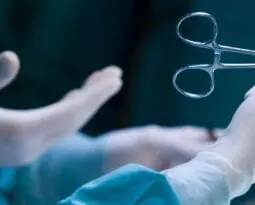Ethics and Organ Transplantation
Selected resources on from The Hastings Center.
Bioethics Briefings:
Organ Transplantation
The central philosophical question in organ transplantation is how to ensure a fair and just system for the allocation of resources. Rationing is unavoidable in organ transplantation due to the large number of individuals on the waiting list and the limited supply of donated organs. Read our briefing to consider the question: What are the ethics behind organ donation and allocation?
From Hastings Bioethics Forum:
- Myopic View of Xenotransplantation. A report last week in the New York Times of a pig heart transplant performed at the University of Maryland Medical Center exemplifies a common myopic view of xenotransplantation research.
- Beyond the Gift of Life: What Else to Expect from an Organ Transplant“Between the time of my heart transplant and the moment my hair began to fall out, I arguably had suffered enough,” writes Leilani R. Graham. “Transplant brought four open-heart surgeries, ten days on ECMO, an intra-aortic balloon pump, delirium, necrotizing pneumonia, and so much muscular atrophy that I had to re-learn how to walk. [Transplant] was not the miracle I was hoping for.”
- Medical Aid in Dying and Organ Donation: Canada’s Autonomy GapOne of the most important aspects of the Canada’s medical aid-in-dying process is the respect given for the patients’ wishes concerning organ donation. People dying of other causes should be shown the same respect.
- Proposal for Revising the Uniform Determination of Death ActWe believe that the concept of brain death, though flawed in its present application, can be preserved and promoted as a pathway to organ donation, but only after particular changes are made in the medical criteria for its diagnosis.
- Xenotransplantation: Three Areas of ConcernNews of the first transplant of a pig’s heart into a human raises hope that the procedure could one day help alleviate the shortage of organs. But before we forge ahead with xenotransplantation trials, we should be concerned about several issues: the potential to spread pathogens, exploitation of human research participants, and animal welfare.
- Individuals Declared Brain-Dead Remain Biologically AliveA remarkable experiment raises anew questions about whether brain-death is really death.
- What Every Prospective Living Kidney Donor Should KnowThere is a growing call for the lifetime risk of living kidney donation to be disclosed to prospective donors. This information is essential for informed consent.
- New Regulation for Organ Procurement Will Improve Equity and Save LivesIn the more than 35 years since federal legislation created organ procurement organizations (OPOs) to recover organs from deceased donors for transplantation, there…
- Kidney Donors Should Be Treated Like Philanthropists, Not Like VendorsSeveral years ago, one of us decided to donate a kidney to someone who needed one. She didn’t anticipate the difficulties that would arise from the process by which donors are evaluated.
- U.S. Organ Donation Needs Better Oversight, but New Rule Will Not HelpMore than 100,000 people in this country are waiting for a life-saving transplant and on average 30 people die each day while waiting. The nonprofit organizations responsible for coordinating organ transplants between donors and recipient could be doing more to lower these numbers. A new government proposal designed to more closely regulate OPOs could, in some respects, actually make the situation worse.
- Evaluating Recommendations to Increase Organ DonationWhile the U.S. system of organ donation and transplantation is in a state of growth for the fifth year in a row, the…
- When Are Organ Recipients Human Research Subjects?Do the recipients of organ transplants have a right to know if the organs they are about to receive were part of a…
- From Jackie and Me: A Plea for Opt-Out Organ DonationThree weeks ago, my dear friend Jackie, a internationally recognized bioethicist in her fifties who lives in Newcastle-Upon-Tyne, went to bed with what…
- Getting By with a Little Help from Your FriendsIf the mutilated body of one of your research subjects is discovered in a blood-soaked bathroom, who should investigate the death? If you…
From Hastings Center Report:
Reevaluating the Ethical Issues in Porcine-to-Human Heart Xenotransplantation
First published: 13 October 2022
Abstract
A major limiting factor with heart allotransplantation remains the availability of organs from deceased donors. Porcine heart xenotransplantation could serve as an alternative source of organs for patients with terminal heart failure. A first-in-human porcine xenotransplantation that occurred in January 2022 at the University of Maryland Medical Center provided an opportunity to examine several ethical issues to guide selection criteria for future xenotransplantation clinical trials. In this article, the authors, who are clinicians at UMMC, discuss the appropriate balancing of risks and benefits and the significance, if any, of clinical equipoise. The authors also review the alleged role of the psychosocial evaluation in identifying patients at an elevated risk of posttransplant noncompliance, and they consider how the evaluation’s implementation might enhance inequities among diverse populations. The authors argue that, based on the principle of reciprocity, psychosocial criteria should be used, not to exclude patients, but instead to identify patients who need additional support. Finally, the authors discuss the requirements for and the proper assessment of informed and voluntary consent from patients being considered for xenotransplantation.
Equal Access to Organ Transplantation for People with Disabilities
First published: 13 July 2021
Abstract
People with disabilities are often denied equal access to organ transplantation despite long-standing federal nondiscrimination mandates. Under the Americans with Disabilities Act and the Rehabilitation Act, people cannot be excluded from consideration for organ transplantation because of disability itself, or because of stereotypes or assumptions about the value or quality of life with a disability. Instead, decisions concerning whether an individual is a candidate for organ transplantation should be based on an individualized assessment of the patient and on objective medical evidence. Recent legal developments underscore these basic guarantees and signal a new focus on the policies, practices, and attitudes that continue to compromise equal access to life-saving organ transplants for people with disabilities.
It Is Time to Abandon the Dogma That Brain Death Is Biological Death
First published: 13 July 2021
Abstract
Drawing on a recent case report of a pregnant, brain-dead woman who gave birth to a healthy child after over seven months of intensive care treatment, this essay rejects the established doctrine in medicine that brain death constitutes the biological death of the human being. The essay describes three policy options with respect to determination of death and vital organ transplantation in the case of patients who are irreversibly comatose but remain biologically alive.
A Heart without Life: Artificial Organs and the Lived Body
First published: 25 February 2021
Abstract
The use of artificial organs is likely to increase in the future, given technological advances, increases in chronic diseases, and limited donor organs. This article examines how artificial organs could affect people’s experience and conceptualization of bodies and our understanding of the relation of body to self. I focus on artificial heart devices and argue that these have two conflicting potential influences. First, they may influence people to regard the body as machinelike and separable from the self. Second, they may effect changes to subjective experience that can be understood as changes to the self, confirming the self’s embodiment. My primary purpose is to increase our understanding of what might change if it becomes more usual to have a body that is partly nonorganic. But I also argue that the analysis points to potential ethical concerns related to strengthening biomedical conceptions of the body and to the devaluing of bodies and body parts.
Living Donors and the Issue of “Informed Consent”
First published: 14 September 2020
Abstract
This essay considers the issue of informed consent as it arose in the context of 1960s living kidney donors. In one of the earliest empirical inquiries into informed consent, psychiatrists Carl H. Fellner and John R. Marshall interviewed donors about their decision-making process and their experience and reflections on donorship. In their much-cited 1970 paper, the physicians reported that living donors, rather than reaching a reasoned, intellectual, and unemotional decision about donating a kidney (as stipulated in the Ethical Guidelines for Organ Transplantation issued by the American Medical Association’s Judicial Council), instead made instantaneous and “irrational” decisions about participation. Fellner and Marshall’s studies contributed to the public debate and professional discussion about the moral and ethical dimensions of donorship, even as they challenged the developing consensus on informed consent.
Plus ça change: Renée Fox and the Sociology of Organ Replacement Therapy
First published: 20 April 2020
Abstract
Rereading Renée C. Fox’s “A Sociological Perspective on Organ Transplantation and Hemodialysis,” published in 1970, one is likely to be struck more by continuity than by change. The most pressing of the social, policy, and ethical concerns that Fox raised remain problematic fifty years later. We still struggle with scientific and clinical uncertainty, with the boundary between experimentation and therapy, and with the cost of organ replacement therapies and disparities in how they are allocated. We still have an imperfect understanding of transplant immune responses. We still debate when a potential donor “actually” dies, and we still seem to think better empirical criteria could harmonize the diverse religious, cultural, and socioeconomic values of patients, providers, third-party payers, and policy-makers. Organ transplantation was for Fox both a particular case unfolding in time and an entryway for discussing the difficult moral questions presented by many new medical technologies in a context of high demand and limited resources.
Would a Reasonable Person Now Accept the 1968 Harvard Brain Death Report? A Short History of Brain Death
First published: 25 December 2018
Abstract
When The Ad Hoc Committee of Harvard Medical School to Examine the Definition of Brain Death began meeting in 1967, I was a graduate student, with committee member Ralph Potter and committee chair Henry Beecher as my mentors. The question of when to stop life support on a severely compromised patient was not clearly differentiated from the question of when someone was dead. A serious clinical problem arose when physicians realized that a patient’s condition was hopeless but life support perpetuated body function. Thus, the committee stated that its first purpose was to deal with the burdens on patients and families as well as on hospitals and on patients needing hospital beds occupied by comatose patients. They intuited the strategy of “defining” these patients as dead, thus legitimating treatment stoppage. They noted that this would also serve a second purpose. Although the dead donor rule had not yet been clearly articulated, they claimed that defining patients as dead would also address controversy over obtaining organs for transplant.
My mentors’ discussions related to my interest in the intersection between questions primarily of medical fact (When has a human brain irreversibly ceased functioning?) and nonmedical questions of social policy (Should we treat individuals with dead brains and beating hearts as dead humans?). It quickly became clear that most committee members did not appreciate the interplay of these questions.
A Path Not Taken: Beecher, Brain Death, and the Aims of Medicine
First published: 25 December 2018
Abstract
It has been fifty years since a report by an ad hoc committee of Harvard Medical School ushered in the widespread adoption of brain death as a definition of death. Yet brain death remains disputed as an acceptable definition within bioethics. The continuous debate among bioethicists has had three key recurring features: first and foremost, argument over alleged flaws in the conceptual logic and consistency of the “whole-brain” approach as a description of the meaning of death; second, efforts to fix perceived limitations of brain death-based practices to optimize transplantation, especially given that transplantation was the presumed original intended purpose of the definition; and third, a basic unease provoked by the experience of using the criteria and managing a body in this state of “irreversible coma.”
The third feature is the one I find the most compelling, though it is less explored, and it persists because of the failures of the prior two. Brain death remains strange—to medical personnel, families, philosophers. That is not because it hasn’t yet been logically argued well enough or conceptually framed adequately, but because those things don’t matter as much to resolving this strangeness as the bioethical approach to brain death over the last fifty years has assumed it does. It is necessary to look to other things that can anchor the aims of medicine in the midst of this strangeness.
Conceptual Issues in DCDD Donor Death Determination
First published: 25 December 2018
Abstract
Despite the popularity, success, and growth of programs of organ donation after the circulatory determination of death (DCDD), a long-standing controversy persists over whether the organ donor is truly dead at the moment physicians declare death, usually following five minutes of circulatory and respiratory arrest. Advocates of the prevailing death determination standard claim that the donor is dead when declared because of permanent cessation of respiration and circulation. Critics of this standard argue that while the cessation of respiration and circulation may be permanent, it may not be irreversible at the moment death is declared because, if cardiopulmonary resuscitation were performed, it might succeed. And because irreversibility of cessation of respiration and circulation is required by both the statute and the biological concept of death, the donor must be alive. Who is correct?
Making two related distinctions clarifies the cause of the disagreement over whether the DCDD donor is dead and points to a possible resolution. First, in a determination of death, there is an important distinction between the permanent and the irreversible cessation of circulation and respiration—two associated phenomena that are often confounded. Second, there is an important distinction between the medical practice standard for death determination, in which physicians certify the permanent cessation of vital functions as sufficient for death declaration, and the underlying biological concept of death that requires the irreversible cessation of vital functions because death, by definition, is an irreversible event.
Uncontrolled DCD: When Should We Stop Trying to Save the Patient and Focus on Saving the Organs?
First published: 25 December 2018
Abstract
Uncontrolled donation after circulatory death, which occurs when an individual has experienced unexpected cardiac arrest, usually not in a hospital, generates both excitement and concern. On the one hand, uDCD programs have the capacity to significantly increase organ donation rates, with good transplant outcomes—mainly for kidneys, but also for livers and lungs. On the other hand, uDCD raises a number of ethical challenges. In this essay, we focus on an issue that is central to all uDCD protocols: When should we cease resuscitation and shift to organ preservation? Do current uDCD protocols prematurely consider as potential donors patients who could still have some chances of meaningful survival? Can the best interest of patients be fostered once they are considered and treated as potential donors?
A Defense of the Dead Donor Rule
First published: 25 December 2018
Abstract
Discussion of the “dead donor rule” is challenging because it implicates views about a wide range of issues, including whether and when patients are appropriately declared dead, the validity of the doctrine of double effect, and the moral difference between or equivalence of active euthanasia and withdrawal of life-sustaining treatment. The DDR will be defined here as the prohibition against removal of organs necessary for the life of the patient—that is, the prohibition of intentionally ending the life of a patient through organ removal. At a minimum, it is difficult not to see the DDR as grounded in a set of laws, norms, values, and practices that are firmly entrenched and have a great deal of philosophical, religious, and legal support. Obviously, the primary argument against the DDR is that it is highly desirable that we continue to procure organs for transplantation, combined with the belief that those from whom we often and possibly typically procure organs are not “really” dead. If donors are not really dead, then we are left with a dilemma: either we abandon organ procurement, or we abandon the DDR. Such a move should be taken only if the way we currently delineate the dead (those from whom it is acceptable to remove organs) cannot be maintained or defended. I will suggest that this is not the case.
The Dead Donor Rule as Policy Indoctrination
First published: 25 December 2018
Abstract
Since the 1960s, organ procurement policies have relied on the boundary of death—advertised as though it were a factual, value-free, and unobjectionable event—to foster organ donation while minimizing controversy. Death determination, however, involves both discoveries of facts and events and decisions about their meaning (whether the facts and events are relevant to establish a vital status), the latter being subjected to legitimate disagreements requiring deliberation. By revisiting the historical origin of the dead donor rule, including some events that took place in France prior to the report by the Ad Hoc Committee of the Harvard Medical School to Examine the Definition of Brain Death, I want to recall that those who first promoted the DDR did not take into account any scientific rationale to support the new proposed criteria to determine death. Rather, through a process of factual re-semantization, they authorized themselves to decide about the meaning of death in order to implicitly prioritize the interests of organ recipients over those of dying people.
The Public’s Right to Accurate and Transparent Information about Brain Death and Organ Transplantation
First published: 25 December 2018
Abstract
The organ transplantation enterprise is morally flawed. “Brain-dead” donors are the primary source of solid vital organs, and the transplantation enterprise emphasizes that such donors are dead before organs are removed—or in other words that the dead donor rule is followed. However, individuals meeting standard diagnostic criteria for brain death—unresponsiveness, brainstem areflexia, and apnea—are still living, from a physiological perspective. Therefore, removing vital organs from a heart-beating, mechanically ventilated donor is lethal. But neither donors nor surrogates nor the public in general are typically informed of this obviously relevant information. Therefore, donors or surrogates do not provide valid consent for a lethal medical procedure. This is a serious moral failing on the part of the transplant community. To address this concern, I advocate for accurate and fully transparent communication of information to the public to allow for an informed civic dialogue about the ethics and legality of lethal organ procurement. Furthermore, I advocate that systems be put in place by the transplant community to allow for valid consent for lethal organ procurement.
Brain Death and the Law: Hard Cases and Legal Challenges
First published: 25 December 2018
Abstract
The determination of death by neurological criteria—“brain death”—has long been legally established as death in all U.S. jurisdictions. Moreover, the consequences of determining brain death have been clear. Except for organ donation and in a few rare and narrow cases, clinicians withdraw physiological support shortly after determining brain death. Until recently, there has been almost zero action in U.S. legislatures, courts, or agencies either to eliminate or to change the legal status of brain death. Despite ongoing academic debates, the law concerning brain death has remained stable for decades. However, since the Jahi McMath case in 2013, this legal certainty has been increasingly challenged. Over the past five years, more families have been emboldened to translate their concerns into legal claims challenging traditional brain death rules. While novel, these claims are not frivolous. Therefore, it is important to understand them so that we can address them most effectively.
Respecting Choice in Definitions of Death
First published: 25 December 2018
Abstract
The definition of death was clearer one hundred years ago than it is today. People were declared dead if diagnosed with permanent cessation of both cardio-circulatory function and respiratory function. But the definition has been muddled by the development of new technologies and interventions—first by cardiopulmonary resuscitation and ventilators, which were introduced in the mid-twentieth century, and now by extracorporeal membrane oxygenation, which creates the ability to keep oxygenated blood circulating, with or without a beating heart or functioning lungs. In Defining Death: The Case for Choice, Robert Veatch and I argue that the definition of death should focus on “what change in a human being is so fundamental that we can say the individual is no longer with us as a member of the human community bearing rights such as the right not to be killed.” We assert that this decision is a normative issue about which different stakeholders may believe that different changes are fundamental, and we therefore propose that the optimal policy solution may be to allow stakeholders to choose their own definition within a reasonable range of options. There are three caveats that need to be highlighted regarding this approach.
The Other Animal of Transplant’s Future
First published: 25 December 2018
Abstract
As an anthropologist, I have long been interested in highly experimental science, with my work engaging the moral underpinnings of xenoscience and, more recently, lab animal research. The possibility of employing animals as human “matches” sparks enthusiastic responses among researchers who imagine various creatures as lucrative “donor species” or “source animals” whose organs might replace the failing parts of humans and render obsolete any future need for brain-dead donors. When we attend to how xenoscientists imagine the promissory qualities of various species, we encounter a specialized logic of how and why one type of animal is valued over another.
Well-established bioethical principles might assist us in framing our position in reference, say, to the limits of human suffering, or how to weigh the worth assigned to human versus animal lives, or how we conceive “the quality of life.” But sadly, subjective experience can creep in to shape and cloud those very stances we regard as bioethically principled. Rather than pursue such a well-worn path, I suggest an alternative framework that privileges attentiveness to everyday thought and action over codified bioethics. This framework—described as “everyday” or “ordinary ethics” in anthropology—involves assuming a critical, self-reflexive stance in reference to quotidian ways of seeing and knowing. Like John Berger, who famously asked, “Why Look at Animals?,” I ask, when we look at the lab-based baboon, chimp, or pig, what do we see? How do we think of, or presume to know, the animal in question? How do we think about human-animal relations in science?
Bodies in Transition: Ethics in Xenotransplantation Research
First published: 25 December 2018
Abstract
Xenotransplantation, or the grafting of organs from one species to another, may seem at first a far cry from brain death, but there is rising hope in some quarters of the biomedical community that such transplants may reduce, even obviate, the need to harvest human organs—and hence eliminate the primary reason for needing an unambiguous definition of brain death. As with all research on the frontiers of biomedicine, xenotransplantation raises its own ethical quandaries. One concern that has long occupied ethical thought is the degree to which advances in science and technology should control the boundaries between the human and the nonhuman. Might the dimming of a previously entrenched bright line between species entail negative consequences for concepts, such as human dignity and bodily integrity, that historically anchored the protection of both human and animal subjects in biomedical treatment and research? To date, ethical thinking about xenotransplantation, and about gene editing, has largely been left in the hands of scientists, subject only to loose supervision by institutional review boards and animal welfare committees whose remit may be too narrow to address age-old moral concerns.
Organ Transplantation and the Uniform Anatomical Gift Act: A Fifty-Year Perspective
First published: 28 March 2018
Abstract
Fifty years ago this summer, the Uniform Anatomical Gift Act was adopted by the National Conference of Commissioners on Uniform State Laws and approved by the American Bar Association. The UAGA has provided a sound and stable legal platform on which to base an effective nationwide organ donation system. The cardinal principles of altruism, autonomy, and public trust are still important. At a time when confidence and trust in our government and many private institutions has declined, maintaining trust and confidence in our health care system and its commitment to “first, do no harm” has never been more important. Any policies that override these core ethical principles could cause irreparable damage to the public’s faith in our transplant system. While progress has been made to increase organ registration and the number of organs transplanted, much more must be done to realize the potential of life-saving therapy without jeopardizing ethical principles.
Are Transplant Recipients Human Subjects When Research Is Conducted on Organ Donors?
First published: 02 August 2017
Abstract
Interventional research on deceased organ donors and donor organs prior to transplant holds the promise of reducing the number of patients who die waiting for an organ by expanding the pool of transplantable organs and improving transplant outcomes. However, one of the key challenges researchers face is an assumption that someone who receives an organ that was part of an interventional research protocol is always a human subject of that same study. The consequences of this assumption include the need for oversight by an institutional review board and for research-level informed consent from transplant recipients, all within the complex practical realities of the organ donation and transplantation process in the United States. The current national focus on this issue provides an opportunity to think critically about the policy goals of the human subjects regulations and their application to the nascent field of deceased organ donor intervention research. We propose that for donor research where the transplant recipient does not fall under the definition of human subject, the clinical consent model—rather than the consent model used for human research subjects—best facilitates the policy objectives of balancing clinical innovation, transparency, and protection of patients in an ethically responsible and legally compliant manner.
What Pacemakers Can Teach Us about the Ethics of Maintaining Artificial Organs
First published: 22 November 2016
Abstract
One day soon it may be possible to replace a failing heart, liver, or kidney with a long-lasting mechanical replacement or perhaps even with a 3-D printed version based on the patient’s own tissue. Such artificial organs could make transplant waiting lists and immunosuppression a thing of the past. Supposing that this happens, what will the ongoing care of people with these implants involve? In particular, how will the need to maintain the functioning of artificial organs over an extended period affect patients and their doctors and the responsibilities of those who manufacture such devices? Drawing on lessons from the history of the cardiac pacemaker, this article offers an initial survey of the ethical issues posed by the need to maintain and service artificial organs.
We briefly outline the nature and history of cardiac pacemakers, with a particular focus on the need for technical support, maintenance, and replacement of these devices. Drawing on the existing medical literature and on our conversations and correspondence with cardiologists, regulators, and manufacturers, we describe five sources of ethical issues associated with pacemaker maintenance: the location of the devices inside the human body, such that maintenance generates surgical risks; the complexity of the devices, which increases the risk of harms to patients as well as introducing potential injustices in access to treatment; the role of software—particularly software that can be remotely accessed—in the functioning of the devices, which generates privacy and security issues; the impact of continual development and improvement of the device; and the influence of commercial interests in the context of a medical device market in which there are several competing products. Finally, we offer some initial suggestions as to how these questions should be answered.
Having Conversations about Organ Donation
First published: 28 September 2015
Abstract
While 90 percent of participants in a 2005 Gallup poll indicated that they would donate an organ if asked, only 40 percent of Americans have registered to do so, according to 2012 data from Donate Life America; likely even fewer have shared their donation wishes with loved ones. Undoubtedly, the single biggest reason for the discrepancy between the number of potential transplants and the number actually performed is our failure to talk with loved ones about our wishes regarding organ donation. Although many resources already exist to hold these conversations, we can do more, and the emergence of social media provides an intriguing new opportunity. Two years ago, Organize.org set out to create the first nationwide organ donation registry in the United States.
Taking Science Seriously in the Debate on Death and Organ Transplantation
First published: 17 June 2015
Abstract
The concept of death and its relationship to organ transplantation continue to be sources of debate and confusion among academics, clinicians, and the public. Recently, an international group of scholars and clinicians, in collaboration with the World Health Organization, met in the first phase of an effort to develop international guidelines for determination of death. The goal of this first phase was to focus on the biology of death and the dying process while bracketing legal, ethical, cultural, and religious perspectives. The next phase of the project will include a broader group of stakeholders in the development of clinical practice guidelines and will use expert consensus on biomedical criteria for death from the first phase as scientific input into normative deliberation about appropriate policies and practices.
Surely, science alone cannot resolve the normative and philosophical questions intertwined in debates about moral status, legal and moral rights, the ethics of killing, and personhood and the nature of the self; however, scientific input is necessary for informed moral deliberation. An objective and unbiased investigation of the biology of death is independent of, and should be undertaken prior to, an analysis of the normative questions engendered by debate about determination of death. This strategy is explicitly endorsed by the International Guidelines for Determination of Death and reflects the prevailing view of these issues in the mainstream medical literature. However, this mainstream literature, exemplified by the IGDD group’s recent report, does not exhibit any of the characteristics usually associated with a scientifically rigorous investigation, such as making empirically testable and falsifiable claims, a commitment to evidence and logic over authoritative assertion, or a willingness to revise hypotheses and theories in light of new evidence. Indeed, the core claims and methodologies of the mainstream medical literature on death, both of which are represented by the IGDD report, are not merely scientifically unjustified; they are not science at all. This situation creates a problem for the integrity of science and the academy, and it unjustly obscures and prevents legitimate democratic and moral deliberation about issues that, at bottom, are normative, not scientific.
Faces as Organ Donations: Who Has the Last Word?
First published: 21 November 2014
Abstract
Recent policy changes enacted by the Organ Procurement and Transplantation Network designate faces as organs for the purposes of donation and transplantation. The OPTN policy includes no requirement that donors be made aware that faces are among donatable parts, but it does require specific consent to face donation (not just organ donation in general) from either the donor or donor’s family before a face can be transplanted. If you are a registered donor and you do not record your refusal, your family might be approached for your face. If your next of kin says yes, your face will be donated. On the other side, if you do want to donate your face and have recorded your specific consent, but your family says no, tough luck. Should families have greater control than donors over the disposition of the donors’ faces?
Duty, Distress, and Organ Donation
First published: 21 November 2014
Abstract
A man of twenty-two is admitted to an intensive care unit (ICU)after intentionally overdosing on Tylenol. The nurse asks the intensivist on call if someone from the local organ procurement organization should be called in to speak to the family, given a worsening clinical picture and the likelihood that the patient will progress to brain death. The patient’s condition is such that multiple organs, including his heart and lungs, could be donated. The intensivist instructs the nurse not to call, as he wishes to have an end-of-life discussion with the parents. He believes that the parents should know that death is imminent and that further interventions will not save their son. He argues that introducing the OPO at this point will cause the family more distress. He wants the parents to be able to give their son a peaceful death without additional stressors. What are the broader implications of not calling the OPO at this juncture? Does the nurse involved have an ethical obligation to override the intensivist’s instructions by calling the OPO? Should the fact that multiple healthy organs could be harvested from this patient’s body have any bearing on the decision to call the OPO?
Dying and multiplying life
First published: 17 September 2014
Abstract
It was only after James P. Lovette’s death, in 2006, that I discovered that the twenty-four-year-old colleague and friend with whom I had spent so many afternoons debating issues in organ transplantation had been the first successful child heart transplantee in the world and one of the longest-living survivors of a second transplant. During the years we met, he never even hinted at the fact that three different hearts had beaten in his chest. The revelation that his life had been an almost uninterrupted chain of medical challenges suddenly made me appreciate his quirkiness in a whole new light.
Organ transplantation crudely exemplifies a traditional moral dilemma between means and ends: in order to save a life, someone else has to die. Bioethicists involved in this field have the role of identifying the ethical issues surrounding organ donation and helping others to argue in an intelligible and convincing way. In my view, bioethicists have the obligation to foster a discussion as open and transparent as possible on these matters. Still, I sometimes fear that I may be helping to cause unnecessary harms to potential recipients who are desperately waiting for a vital organ. Scholars would be chillingly cold if their quest for truth systematically came at the cost of lives lost. Every life can be meaningful and provide meaning to many others. This is true even with organ recipients, who often have short lives full of considerable suffering.
Pig Hearts and Machine-Lathed Kidneys: The Ethics of Staying Alive
First published: 09 July 2014
Abstract
To most people outside the relevant laboratories and operating rooms, xenotransplants and artificial organ transplants are bizarre. While the bizarre scares many away and angers others, Lesley A. Sharp approached it and asked, What behooves medical research to take organs out of pigs and primates and design organs out of metal and plastic and use them to replace failing organs in humans? Sharp attended years of conferences, visited countless hospitals and laboratories, and interviewed engineers, scientists, and surgeons to explore the choices and implicit values of decision-makers in alternative transplantation. The Transplant Imaginary: Mechanical Hearts, Animal Parts, and Moral Thinking in Highly Experimental Science is a rich resource for philosophers who wish to expound on the morality of implanting nonhuman animal and mechanical organs into humans. The author’s thorough ethnographic survey of xeno- and biomechanical transplant research leads well into two lines of questioning. First, how ethical is the pursuit of alternative transplant? Second, what is essential for transplant researchers to do their jobs ethically?
On Noncongruence between the Concept and Determination of Death
First published: 18 November 2013
Abstract
A combination of emerging life support technologies and entrenched organ donation practices are complicating the physician’s task of determining death. On the one hand, technologies that support or replace ventilation and circulation may render the diagnosis of death ambiguous. On the other, transplantation of vital organs requires timely and accurate declaration of death of the donor to keep the organs as healthy as possible. These two factors have led to disagreements among physicians and scholars on the precise moment of death. In this article, I suggest that the debate about exactly when a person dies can benefit from distinguishing the strict biological concept of death from the medical standards for determining human death, and I show how an appreciation of the difference between the permanent and irreversible cessation of circulation is helpful in understanding the reasons for the two approaches to determining when death should be declared.
Casting Light and Doubt on Uncontrolled DCDD Protocols
First published: 11 January 2013
Abstract
The ever-increasing demand for organs led Spain, France, and other European countries to promote uncontrolled donation after circulatory determination of death (uDCDD). For the same reason, New York City has recently developed its own uDCDD protocol, which differs from European programs in some key ways. The New York protocol incorporates a series of technical and management improvements that address some practical problems identified in response to European uDCDD protocols. However, the more fundamental issue of whether uDCDD donors are dead when organs are procured remains problematic for the New York City protocol and, indeed, for all uDCDD protocols.
In the United States, two amendments to the legal criteria of death have been suggested to avoid a formal violation of the dead donor rule in DCDD protocols: first, replacing the requirement “irreversible” with the weaker term “permanent,” and second, using the term “circulatory” instead of “cardiac” to identify the key function that must be lost to declare death. While intended to facilitate controlled DCDD, these modifications create a problem for uDCDD protocols: if extracorporeal membrane oxygenation is introduced to preserve the organs, then circulation is restored after death is declared. In this issue of the Hastings Center Report, Kevin Munjal and colleagues call for a new ethical construct and policy so that uncontrolled and controlled DCDD can coexist.
Determining Death in Uncontrolled DCDD Organ Donors
First published: 11 January 2013
Abstract
The most controversial issue in organ donation after the circulatory determination of death is whether the donor was truly dead at the moment death is declared. My colleagues and I further analyzed this issue by showing the relevance of the distinction between the “permanent” and the “irreversible” loss of circulatory functions. Permanent cessation means that circulatory function will not return because it will not be restored spontaneously and medical attempts to restore it will not be conducted. By contrast, irreversible cessation means that circulatory function cannot be restored using currently available technology. In this issue of the Report, Kevin Munjal and colleagues criticize the unjustified application of the permanent-irreversible distinction, which my colleagues and I developed for cDCDD, to their well-designed and carefully conducted experimental protocol of uncontrolled DCDD (uDCDD) in New York City, for which our analysis was not targeted. They claimed that to determine a donor’s death in uDCDD, it is unnecessary to show that permanence is a valid surrogate indicator of irreversibility because the unsuccessful attempt to resuscitate the patient comprises prima facie evidence of circulatory irreversibility. Ironically, that potent justification defending death determination in uDCDD yields limitations that are similar to those created when our permanent-irreversible distinction is applied to death determination in cDCDD.
A Rationale in Support of Uncontrolled Donation after Circulatory Determination of Death
First published: 18 December 2012
Abstract
Most donated organs in the United States come from brain dead donors, while a small percentage come from patients who die in “controlled,” or expected, circumstances, typically after the family or surrogate makes a decision to withdraw life support. The number of organs available for transplant could be substantially if donations were permitted in “uncontrolled” circumstances–that is, from people who die unexpectedly, often outside the hospital. According to projections from the Institute of Medicine, establishing programs permitting “uncontrolled donation after circulatory determination of death,” or uDCDD, throughout the United States has the potential to provide 22,000 more donation opportunities annually. In contrast, U.S. controlled donation after circulatory determination of death, or cDCDD, cases have increased progressively over the past decade from 87 to 848 donors, but currently account for only 10.6 percent of all deceased donors. Following the IOM recommendations, several projects exploring the feasibility of uDCDD were funded by the federal government, including a grant from the Health Resources and Services Administration that supported a pilot project in New York City in which the authors of this article participated.
A key feature of our protocol, and indeed of many uDCDD protocols, is the initiation of preservation methods such as chest compressions and extracorporeal membrane oxygenation shortly after death in order to perfuse and preserve the donor’s organs. Critics of uDCDD argue that the means of determining death deviates from generally ascribed principles. They assert that reinstituting circulation in order to preserve organs has the effect of “undoing” the prior determination of death. The result is that cDCDD is widely accepted and practiced routinely even though it only marginally increases the number of organs available for transplantation, and uDCDD is widely considered unacceptable despite being ethically embraced and proven to significantly increase organ donation opportunities in other countries. This article explores the evolution of this counterintuitive state of affairs and calls for a policy that, in line with the IOM report, allows for both cDCDD and uDCDD protocols.
Is It Time to Abandon Brain Death?
First published: 23 March 2012
Abstract
Despite its familiarity and widespread acceptance, the concept of “brain death” remains incoherent in theory and confused in practice. Moreover, the only purpose served by the concept is to facilitate the procurement of transplantable organs. By abandoning the concept of brain death and adopting different criteria for organ procurement, we may be able to increase both the supply of transplantable organs and clarity in our understanding of death.
Homo Economicus: Commercialization of Body Tissue in the Age of Biotechnology
First published: 23 March 2012
Abstract
The human body is becoming hot property, a resource to be “mined,” “harvested,” patented, and traded commercially for profit as well as scientific and therapeutic advances. Under the new entrepreneurial approach to the body old tensions take on new dimensions—about consent, the fair distribution of tissues and products developed from them, the individual and cultural values represented by the body, and public policy governing the use of organs and tissues.
Delimiting the Donor: The Dead Donor Rule
First published: 06 March 2012
Abstract
The scarcity of vital organs has prompted several calls to either modify the dead donor rule or interpret it more broadly. Given its symbolic importance, however, the rule should be changed only cautiously.
Organ Swapping
First published: 06 March 2012
Abstract
Some transplant centers are making use of a four-person organ exchange to encourage live donor kidney transplantation. Although no money changes hands, it is a quasi-contractual arrangement and a step toward for-profit transactions, and it threatens to undermine the organ donor system.
Body Values: The Case against Compensating for Transplant Organs
First published: 06 March 2012
Abstract
Proposals to compensate families for transplantable organs are gathering momentum. These proposals assume that the body is not integral to the self—that it can be treated like property. Most people believe otherwise.
The Fallacy of the “Gift of Life”
First published: 06 March 2012
Abstract
In the dominant metaphor for organ transplantation, the organ is the ultimate gift, the dying donor’s life-giving bequest, conveyed and made possible by a heroic transplant team. The metaphor encourages donation and enforces recipients’ compliance with post-transplant treatment. It is also inaccurate and sometimes deeply damaging for the recipient.
The Gift of Life and the Common Good: The Need for a Communal Approach to Organ Procurement
First published: 06 March 2012
Abstract
Its critics to the contrary, the “gift of life” metaphor is not to be blamed for the indebtedness and guilt that organ recipients often experience. It is certainly misused, however, both by post-transplant caregivers, who exploit it to manipulate recipients’ behavior, and by the organ procurement system, which has failed to understand that the decision to give the gift of life must be approached communally.
Rethinking the Ethics of Vital Organ Donations
First published: 08 February 2012
Abstract
Accepted medical practice already violates the dead donor rule. Explicitly jettisoning the rule—allowing vital organs to be extracted, under certain conditions, from living patients—is a radical change only at the conceptual level. But it would expand the pools of eligible organ donors.
Conversations with Kidney Vendors in Pakistan
First published: 08 February 2012
Abstract
In theory, a commercial market for kidneys could increase the scarce supply of transplantable organs and give impoverished people a new way to lift themselves out of poverty. In-depth sociological work on those who opt to sell their kidneys reveals a different set of realities. Around the town of Sarghoda, Pakistan, the negative social and psychological ramifications of selling a kidney affect not only the vendors themselves, but also their families, communities, and even the country as a whole.
Leaving the Field
First published: September 1992
Abstract
They have watched, as insiders, the first fumbling attempts to transplant kidneys, then hearts, then live-donated lobes of liver and lung. Now the two sociologists most closely identified with organ transplantation have concluded that they must leave the field.
Organs for Transplantation
First published: November 1991
Abstract
Singapore’s Human Organ Transplant Act presumes that competent adults consent to donate their kidneys in the event of a fatal accident, unless they have refused in writing. No family consent is required. What can other countries wishing to implement a presumed-consent model of organ donation learn from Singapore’s experience?
Anencephalic Donors: Separate the Dead From the Dying
First published: February 1987
Abstract
Proposals to use organs from anencephalic infants to meet the growing need for transplantable ogans are well-meaning but misguided. It would be unwise to amend the Uniform Determination of Death Act to classify anencephalics as “dead.” They are in the same situation as other patients (such as the permanently comatose). Likewise, amending the Anatomical Gin Act to permit organs to be removed from anencephalics would be unjust would set a bad precedent and would likely reduce overall success in this field.
From The Hastings Center Bioethics Timeline
1953: Papal Approval of Organ Transplantation
At the 26th Congress of Urology, Pope Pius XII, quoting St. Thomas Aquinas (Summa Theologica II, Question 65, Article I) endorsed organ transplants on the grounds of the Totality Principle, which stated that every part of the human body “exists for the sake of the whole.” This permitted the sacrifice of one part of a human being for the continued survival of another.
1954: Successful Kidney Transplants
In December 1954 surgeon Joseph Murray and his colleagues at the Peter Bent Brigham Hospital in Boston performed the first successful human kidney transplant. During the surgery, 24-year-old Richard Herrick received a kidney donated by his identical twin brother, Ronald. Richard lived for nine years with the repurposed kidney. Kidney (and soon other organ) transplants stimulated much ethical discussion and debate over risks to living donors, whether mentally impaired individuals could “donate,” a market in human organs, and how to allot scarce tissue.
J. E. Murray, “Reflections on the First Successful Kidney Transplantation,” World Journal of Surgery 6, no. 3 (1982): 372-76.
R. M. Veatch, and L. F. Ross, Transplantation Ethics (Georgetown University Press, 2015).
1963: World’s First Liver Transplant
Dr. Thomas Starzl performs the world’s first liver transplant on Bennie Solis, a 3-year-old boy with biliary atresia. Although Solis and many of the other early recipients of livers die, Starzl and other surgeons eventually perfect the technique and save thousands of lives.
1967: First Human-to-Human Heart Transplants Performed by Barnard and Kantrowitz
On December 3, 1967, Dr. Christiaan Barnard performed the first successful human heart transplant at the Groote Schubert Hospital in South Africa, placing him and the hospital in an international spotlight. The patient survived for 18 days; although the heart pumped strongly, he succumbed to infection secondary to immune suppression to prevent rejection.
Dr. Adrian Kantrowitz performed the world’s second transplant, and the first in the United States, at Maimonides Hospital in Brooklyn three days after Dr. Barnard’s surgery. The patient, an infant, survived for 6.5 hours. Kantrowitz would go on to be best known for the Intra-Aortic Balloon Pump.
1968: Definition of Death
An ad hoc committee at Harvard Medical School reexamined the definition of brain death and defined irreversible coma, or brain death. These definitions and guidelines would facilitate retrieval of organs for transplantation.
“A Definition of Irreversible Coma: Report of the Ad Hoc Committee of the Harvard Medical School to Examine the Definition of Brain Death,” Journal of the American Medical Association 205 no. 6 (1968): 337-40.
1968: Organ Donation
Uniform Anatomical Gift Act (UAGA) is formulated and recommended by the National Conference of Commissioners on Uniform State Laws for adoption by the states. All states in the United States rapidly passed relatively uniform laws based on the UAGA.
Ethical Guidelines for Organ Transplantation, Judicial Council of the American Medical Association
1974: Publication of Renée Fox and Judith Swazey’s The Courage to Fail. A Social View of Organ Transplants and Dialysis
Renee Fox and Judith Swazey combine their respective sociological and historical perspectives to explore how biomedical research has influenced medical practice in the United States through a focus on the development of organ transplantation. R. Fox and J. Swazey, The Courage to Fail. A Social View of Organ Transplants and Dialysis(reprinted: Cambridge University Press, 2012).
1981: Defining Death: Medical, Legal, and Ethical Issues in the Determination of Death
The report from the President’s Commission for the Study of Ethical Problems in Medicine and Biomedical and Behavioral Research addressed the issue of definitions of death, including neurological criteria for death known as “brain death.” The Report called for a uniform definition of death based on a “total brain” standard. This standard defines death as the death of the entire brain of a person. The Commission sought to address a need for a legal definition of death which could incorporate advances made by new technologies that could perform necessary bodily functions. There was wide agreement between physician testifiers to the Commission that a definition of death which referred to irreversible loss of brain functions was required.
https://scholarworks.iupui.edu/handle/1805/707
1983: The Hastings Center Working Group on Organ Transplantation
This group of scholars focused on reforming the Uniform Anatomic Gift Act to include a requirement that potential surrogates be asked to consider donating the organs of deceased; reviewed issues of equity in organ distribution, and accessed alternatives to current policy (e.g., market allocation; presumed consent). No formal report was issued, but members published over a dozen articles on these issues in such publications as the Journal of the American Medical Association, theNew England Journal of Medicine, and other influential medical journals.
1984: U.S. National Organ Donor Transplantation Act of 1984
This Act prohibits the sale or purchase of human organs and establishes the Organ Procurement and Transplantation Network (OPTN) to be operated by a private, nonprofit organization under federal contract. (The United Network for Organ Sharing (UNOS) later received this contract.). This act precluded market solutions to organ shortages and makes organ donation (“the gift of life,” so-called) the national model for organ procurement. It also commissioned a Task Force on Organ Transplantation, which issued its report in 1986.
National Organ Transplant Act (1984 Pub.L. 98–507), approved October 19, 1984, and amended in 1988 and 1990.
1986: Transplantation: Organ Transplantation: Issues and Recommendation
This national task force was established by the 1984 National Organ Transplant Act. Its several recommendations included recognizing “each donated organ . . . [as] a national resource to be used for the public good,” involving the public in setting the criteria for organ allocation and implementing required request-routine inquiry policies which thereby precluded the market allocation of solid organs.
Task Force on Organ Transplantation: Organ Transplantation: Issues and Recommendation (U.S. Department of Health and Human Services, Public Health Service, Health Resources and Services Administration, Office of Organ Transplantation, April 1986).
https://www.organdonor.gov/about/facts-terms/history.html
2018: Publication of Defining Death: Organ Transplantation and the Fifty-Year Legacy of the Harvard Report on Brain Death
The Hastings Center publishes this special report on the definition of death.
